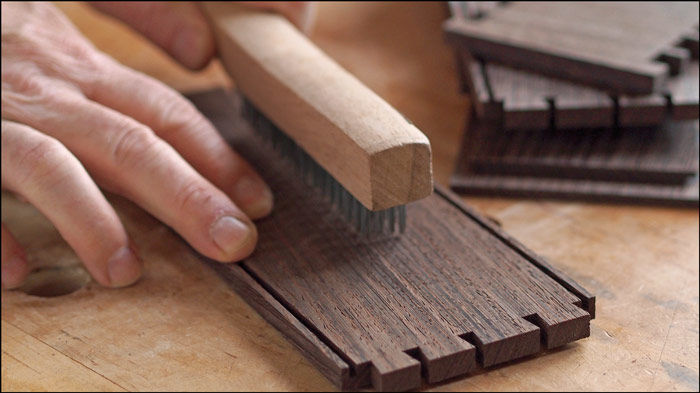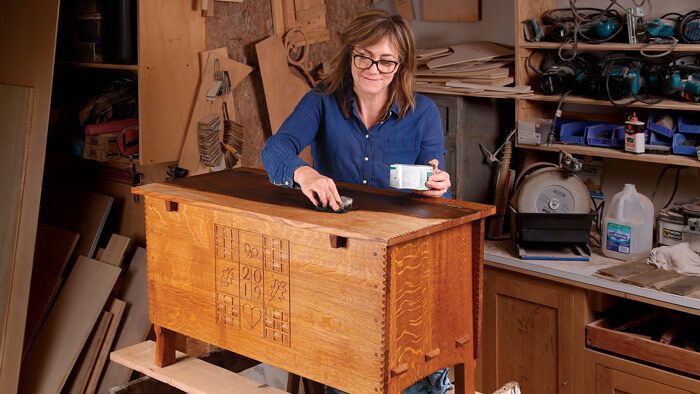How to Create a Textured Finish with a Wire Brush
On his wenge tea box, Mike Pekovich reaches for a tool not normally found in the arsenal of most woodworkers, a metal barbecue grill brush.
Mike Pekovich usually prefers to do little more than handplane a surface in preparation for finishing. This gives him a flat, smooth surface that shows off the beauty of the wood and the design of the piece. However, on his wenge tea box (FWW #269), he reaches for a tool not normally found in the arsenal of most woodworkers, a metal barbecue grill brush. Wenge is so dark that sometimes it can look a little lifeless, and adding texture to the finish helps bring it to life. Also, a small box is likely to be picked up and handled a lot, and texture adds a whole new dimension to the way someone interacts with it.

First, Mike rubs the pieces with a barbecue brush, which not only opens up the pores of the wood but also burnishes the surface a bit. This is followed by an abrasive nylon flap brush mounted in a drill. The flap brush eliminates any fuzziness left by the wire brush and further burnishes the surface of the wenge. All that is left is a couple of coats of shellac followed by some dark wax.
Watch Mike make this tea box on Classic Woodworking: Dovetailed Tea Box (105).
For Mike’s how to article on building this box, check out issue #269.
More on FineWoodworking.com:








Log in or create an account to post a comment.
Sign up Log in